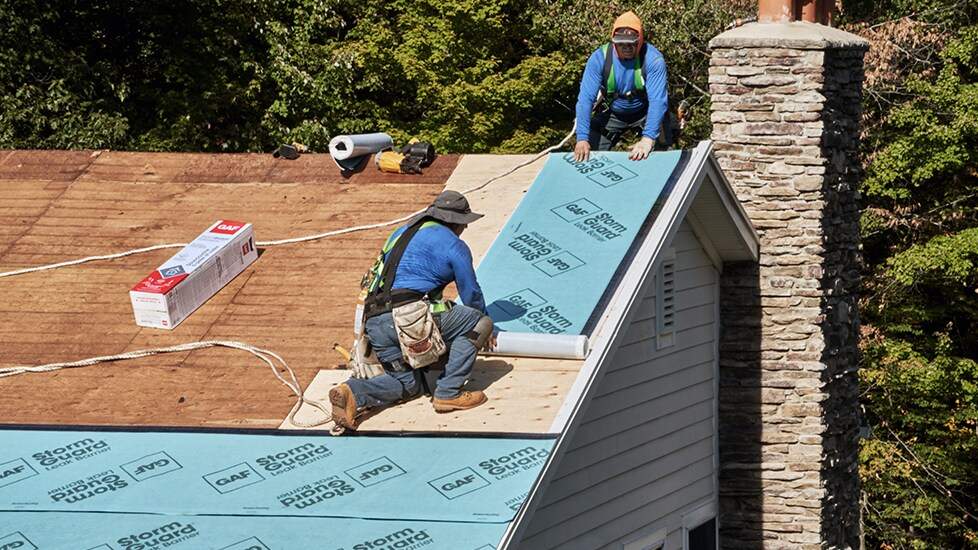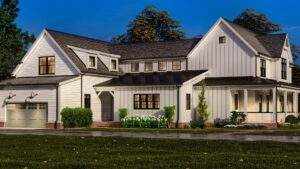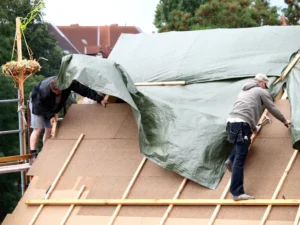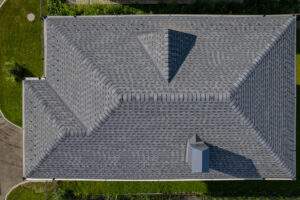Living in Fargo means getting used to dramatic weather swings—spring storms, summer hail, and harsh freeze-thaw cycles come with the territory. Homeowners around neighborhoods like Rose Creek, Hawthorne, or near the Red River know that when the wind picks up, it really picks up. And when a roof starts to fail, it’s not just an eyesore—it can turn into a real mess, fast.
So, what’s the smart move when you’re tired of temporary roof patches or constant repairs after every storm? Many in Fargo are turning to fortified roofs—a smarter, stronger solution designed to withstand North Dakota’s wild weather.
But what is a fortified roof exactly?
And could it actually save you money in the long run?
Let’s break it down.
Key Takeaways
- A fortified roof is a stronger roofing system built to handle wind, hail, and snow common in Fargo.
- Fargo neighborhoods like Osgood and West Acres benefit from better protection and fewer roof issues during harsh weather seasons.
- A fortified roof costs more upfront but saves money over time with fewer repairs and lower insurance claims.
- Resale value and energy efficiency improve when Fargo homes have fortified roofs that last through every season without worry.
What Is a Fortified Roof?
A fortified roof isn’t just a marketing term—it’s a building standard developed by the Insurance Institute for Business & Home Safety (IBHS). It’s designed to make homes more resilient during high winds, hail, heavy snow, and even tornadoes. Perfect for places like Fargo, where those conditions hit hard and often.
There are three levels of FORTIFIED standards: Roof, Silver, and Gold.
Most homeowners start with FORTIFIED Roof, which focuses solely on making the roof system tougher—without needing a full structural overhaul.
Key features of a fortified roof include:
- Sealed roof deck to prevent water intrusion if shingles blow off.
- Upgraded shingles rated for high-wind and hail resistance.
- Improved fasteners like ring-shank nails spaced closer together.
- Enhanced edge protection to keep wind from lifting shingles or tearing off decking.
In simple terms: it’s the difference between slapping on a patch after every storm, or building a roof that’s ready for the next one.
Why Fortified Roofs Make Sense in Fargo
We don’t get soft winters here—and summers bring their own drama. From ice dams on homes near Longfellow Park to July hail storms pounding roofs in West Acres, Fargo’s climate is tough on roofing materials.
Here’s why a fortified roof just makes sense in our area:
1. Wind and Hail Resistance
Fargo’s straight-line winds can rip standard asphalt shingles right off. A FORTIFIED Roof uses materials and techniques proven to withstand gusts up to 130 mph—comparable to a Category 3 hurricane. But wind isn’t the only threat.
According to data from StormerSite, the Fargo area saw 75 hail reports within 10 miles of the city center, with the largest hailstone measuring 3 inches across. That kind of hail can tear through traditional roofing in seconds.
With a FORTIFIED Roof, you’re getting a system designed to hold up against both wind and impact—so your home’s ready for whatever hits next.
2. Snow and Ice Defense
Our freeze-thaw cycles wreak havoc on shingles and underlayment. A sealed roof deck—a must-have in the fortified system—helps prevent water from seeping in under melting snow or through ice dams.
Just look at what happened during the 1951 fire at the Earle Hotel downtown. After firefighters put out the flames, all that water froze solid, turning the whole building into what folks called an “eerie ice castle.”
It’s an extreme example, but it shows how fast water turns to ice around here—and why it’s so important to keep it out of your roof system in the first place.
3. Insurance Perks
North Dakota insurers are catching on. Many offer discounts for homeowners who upgrade to FORTIFIED Roofs because the risk of claims drops significantly.
It’s not uncommon for homeowners in Cass County to save hundreds annually—especially in high-risk zones like near I-94 or University Drive.
Fortified Roof vs. Patch Job: Which Saves You More?
A patch job seems cheaper—until it isn’t. Here’s why going fortified can pay off in the long haul:
| Factors | Patch Job | FORTIFIED Roof |
| Initial Cost | Low | Higher |
| Durability | Temporary fix | Built to last 20+ years |
| Insurance Claims | Frequent | Reduced risk |
| Peace of Mind | Worry with every storm | Confidence in every season |
If your roof has already taken weather damage—or you’re patching the same spot again and again—it might be time to stop paying for Band-Aids and start investing in protection.
Does a Fortified Roof Affect Home Value in Fargo?
Yes—and in more ways than one.
- Resale Value: Buyers shopping in Fargo’s competitive neighborhoods, like Northport or Clara Barton, are looking for homes that are “move-in ready.” A fortified roof signals long-term durability, which is a big selling point.
- Energy Efficiency: With improved sealing and insulation, fortified roofs can reduce heat loss during Fargo’s long winters—translating to lower heating bills.
- Peace of Mind: Whether you’re hunkering down during a January blizzard or riding out summer storms, knowing your roof is up to the challenge adds real value.
Stop Patching. Start Protecting.
Your roof takes the brunt of every Fargo storm—so why keep patching it like it’s a temporary fix?
At Allstar Construction, we help homeowners across Fargo—from downtown to the far reaches of Southpointe—upgrade to fortified roofing systems that last. Whether it’s damage from that last hailstorm or you’re finally ready to stop worrying every time the wind howls off the plains, we’ve got the experience and certifications to do it right.
Schedule a free roof assessment at 701-409-2709 and get a no-obligation estimate to see if a FORTIFIED Roof is the right solution for your home.
We’ll walk you through the options, explain any insurance discounts, and help you protect what matters most—before the next storm rolls through.






